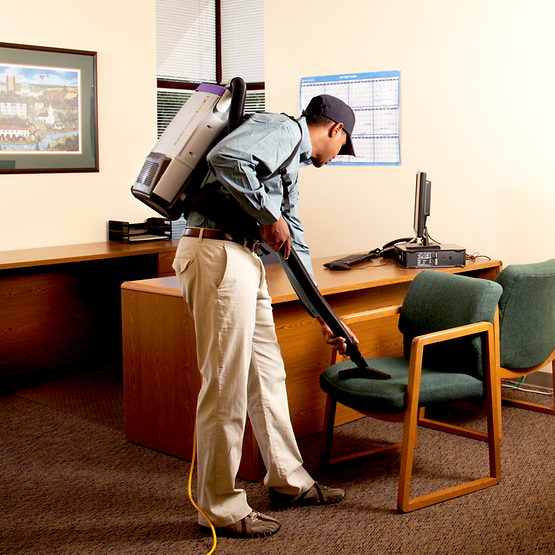When managing a business, it’s easy to focus on visible operations—sales, marketing, staffing, and client service. But what about the everyday elements that quietly shape your company’s environment and image? One often-overlooked aspect is the condition of your office or commercial space’s furnishings. Neglecting commercial furniture cleaning may seem like a harmless oversight, but the hidden costs can add up fast—both financially and reputationally.
This article explores why skipping routine commercial furniture maintenance can end up being more expensive than you think, and why investing in regular cleaning is a smart, long-term business decision.
Damage to Brand Perception
In any customer-facing business—whether it’s a law office, medical practice, coworking space, or high-traffic retail location—first impressions are critical. Customers, clients, and even potential partners often form opinions about your brand within the first few seconds of entering your space. What message do stained upholstery, worn armrests, or dusty office chairs send?
When commercial furniture looks dirty or poorly maintained, it conveys a sense of carelessness. Clients may wonder if you cut corners in other areas of your business as well. On the flip side, clean, fresh-smelling furniture reinforces professionalism, trustworthiness, and attention to detail.
Investing in commercial furniture cleaning helps ensure your physical environment aligns with the quality of your services, building confidence and credibility.
Reduced Lifespan of Furniture
One of the biggest hidden costs of neglecting regular cleaning is the toll it takes on the furniture itself. Dirt, dust, oils, and everyday grime can break down upholstery fibers and materials over time. When stains are left untreated or spills are allowed to seep into cushions, irreversible damage can occur.
Businesses that fail to invest in commercial furniture cleaning often find themselves replacing chairs, couches, and office seating far more frequently than necessary. While furniture replacement is an inevitable part of any workspace lifecycle, doing so prematurely due to neglect is a preventable expense.
Regular cleaning removes debris, refreshes fabric, and helps preserve the integrity of materials, extending the usable life of your investment and reducing capital expenditure in the long run.
Health and Hygiene Concerns
It’s not just about looks—furniture in shared environments can become a reservoir for allergens, bacteria, and other contaminants. Dust mites, pet dander (in pet-friendly offices), pollen, and skin particles accumulate in fabric and cushions. Without professional cleaning, these invisible intruders can trigger allergies, asthma, and general discomfort among employees and visitors.
In a post-pandemic world, where hygiene expectations are higher than ever, failing to maintain sanitary conditions can negatively impact employee morale and customer satisfaction. People are more conscious of cleanliness, and an unsanitized office can become a source of anxiety—or worse, a liability.
Regular commercial furniture cleaning not only improves indoor air quality but also creates a healthier, safer environment, especially in industries where cleanliness is paramount—such as healthcare, hospitality, and education.
Impact on Employee Productivity and Morale
Believe it or not, clean furniture can influence how employees feel about their workplace. Just as clutter can create stress and distraction, unkempt or stained furniture can lower morale and create a sense of neglect.
People take pride in working in well-maintained environments. A clean, orderly office boosts employee confidence and can subtly encourage higher standards in behavior and performance. On the other hand, neglected furniture may signal to staff that cleanliness and comfort aren’t valued—potentially leading to lower job satisfaction and even higher turnover.
By incorporating commercial furniture cleaning into your facility management routine, you’re investing in both the physical space and the people who work in it. It’s a small but powerful way to promote a positive workplace culture.
Risk of Permanent Staining and Odors
When stains are allowed to sit over time, they often become impossible to remove without damaging the fabric. This is especially true for high-traffic areas like waiting rooms, reception areas, and lounges where food, beverages, and dirt are commonly present.
Lingering odors are another major concern. Sofas and chairs absorb smells from food, sweat, smoke, and environmental pollutants. These odors can embed themselves deep in the fabric and padding, creating an unpleasant atmosphere that no amount of air freshener can cover.
Professional cleaning not only addresses surface stains but also reaches deep into the materials to neutralize odors and remove hidden residues. Skipping this essential service can lead to furniture that never quite feels—or smells—clean, leaving a lasting negative impression on guests and employees alike.
Legal and Safety Liabilities
In some industries, failing to meet cleanliness standards can lead to more than just embarrassment—it can result in fines, lost business, or legal action. For example, commercial properties that are subject to health inspections or safety audits must maintain clean and sanitary environments to comply with regulations.
Unclean furniture, especially in environments like medical offices or childcare facilities, can pose health risks that lead to citations or legal claims. Having a routine commercial furniture cleaning schedule is a proactive step that helps protect your business from compliance issues and demonstrates due diligence in maintaining a safe space.
Conclusion: Prevention Is Better—and Cheaper—Than Replacement
The hidden costs of ignoring furniture cleanliness are varied and serious. From replacing furniture sooner than necessary, to damaging your business’s image, to risking employee health and regulatory penalties, the price of inaction is often far higher than the cost of routine maintenance.
